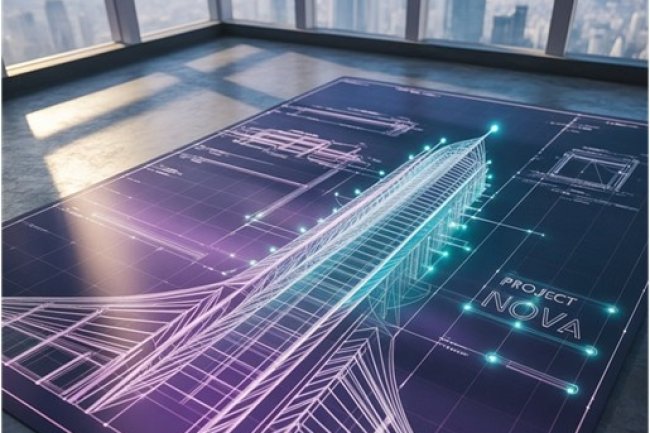Will AI Replace the Mechanical, Electrical, and Plumbing Design Sector?
This document examines the evolving relationship between artificial intelligence and the specialized field of Mechanical, Electrical, and Plumbing (MEP) engineering. As AI technologies advance rapidly across industries, MEP professionals face legitimate questions about how these tools will transform their work—or potentially replace it. Through a comprehensive analysis of current capabilities, industry trends, and technical limitations, we explore whether AI represents an existential threat to MEP design professionals or offers a powerful set of tools that will reshape rather than replace human expertise. This assessment balances technological optimism with practical realities of complex engineering systems that continue to require human judgment, creativity, and accountability.

The Rise of AI in MEP Engineering
The integration of artificial intelligence into MEP engineering workflows has accelerated dramatically in recent years, with projections indicating that by 2025, AI tools will be incorporated into most major MEP design processes across the industry. This rapid adoption is primarily driven by increasing demands for faster design cycles, error reduction, and the need to manage increasingly complex building systems with greater efficiency.
Industry surveys reveal a striking trend: over 70% of MEP firms now utilize some form of AI-assisted design platforms in their daily operations. These tools range from specialized software that automates basic calculations to sophisticated systems that can generate multiple design options based on given parameters. The most advanced implementations integrate with Building Information Modeling (BIM) environments to provide real-time feedback and optimization suggestions.
This widespread adoption represents a significant shift from just five years ago, when AI tools were considered experimental or limited to the largest engineering firms with substantial R&D budgets. Today, even mid-sized practices are implementing AI-enhanced workflows to remain competitive in a market that increasingly values speed, accuracy, and efficiency in MEP design services.
The financial investment in AI tools for MEP design has seen corresponding growth, with industry reports indicating a 300% increase in spending on these technologies between 2019 and 2023. This surge in investment reflects both the perceived value of these tools and a recognition that traditional design methodologies may no longer be sufficient to meet the demands of modern construction projects with their compressed timelines and complex performance requirements.
Core Areas Where AI Excels
- Automating Repetitive Tasks
AI systems excel at handling routine aspects of MEP design, including device placement, verifying code compliance, and generating standard layouts. These platforms can apply consistent rules across large projects in minutes, a process that traditionally required hours or days of engineering time.
• Automatic placement of electrical outlets based on code requirements• Standardized ductwork routing following best practices• Rapid checking of designs against relevant building codes -
Generative Design Capabilities
Within seconds, AI can generate dozens of optimized lighting and plumbing layout options that meet specified performance criteria. These systems leverage parametric design principles to explore solution spaces far more extensively than human designers could manually.
• Multiple lighting layouts optimized for energy efficiency• Plumbing systems minimizing pipe runs while maintaining performance• HVAC distribution systems balancing comfort and energy use -
Complex System Integration
Modern AI tools excel at identifying relationships between interdependent MEP systems, spotting potential conflicts, and suggesting improvements that might not be immediately apparent to human engineers working within disciplinary silos.
• Identification of spatial conflicts between ductwork and structural elements• Optimization of electrical and mechanical systems for energy synergies• Coordination of ceiling plenum space across multiple building systems -
Error Detection and Resolution
AI systems can identify potential design flaws early in the process, reducing the time spent on revisions by 25-50%. This capability transforms the traditional design review process by catching issues before they reach construction documentation or implementation phases.
• Automatic identification of code violations• Detection of undersized components based on calculated loads• Flagging of inconsistencies between related systems
These capabilities represent areas where AI demonstrates clear advantages over traditional design approaches, enabling MEP engineers to achieve higher levels of accuracy and efficiency. The speed at which these systems can evaluate multiple design options and identify potential issues has dramatically compressed design cycles while improving overall quality.
Limits of AI: Where Human Expertise Remains Essential
|
Despite impressive capabilities, AI systems in MEP design face significant limitations that preserve the essential role of human engineers. These boundaries define where professional expertise remains irreplaceable, even as automation advances: Contextual Understanding and Creative Problem-Solving While AI excels at applying defined rules and patterns, it struggles with novel situations requiring creative solutions. Human engineers draw on tacit knowledge, cross-disciplinary insights, and intuition developed through years of experience to solve unique design challenges. When projects involve unusual constraints, historic buildings, or specialized facilities like laboratories or data centers, the contextual understanding of experienced engineers becomes invaluable. |
|
Client Relationship Management and Requirement Interpretation The nuanced process of translating client needs into technical requirements remains a distinctly human domain. Engineers must often "read between the lines" of client requests, anticipate unstated expectations, and negotiate practical solutions when requirements conflict. These interpersonal aspects of engineering practice involve emotional intelligence and communication skills that current AI systems cannot replicate. |
|
Adapting to Rapid Changes and Ambiguity Construction projects frequently encounter unexpected conditions or late-stage design changes that require rapid adaptation. Human engineers excel at working with ambiguity and making judgment calls when complete information isn't available. While AI systems need well-defined parameters to function effectively, skilled professionals can make reasonable assumptions and proceed with partial information when necessary. |
|
Professional Responsibility and Ethical Considerations Perhaps most fundamentally, professional engineers bear legal and ethical responsibility for their designs. They must balance competing factors like safety, cost, sustainability, and client preferences based on professional judgment. This accountability aspect of engineering practice—where professionals literally "put their stamp" on designs—remains firmly in the human domain and represents a significant barrier to complete automation of MEP design. |
Conclusion: AI as a Transformative Tool, Not a Replacement
The evidence examined throughout this document points to a clear conclusion: artificial intelligence is revolutionizing the MEP design sector without replacing the engineers at its core. This technology represents a powerful set of tools that is reshaping how engineers work rather than eliminating the need for their expertise. The transformation underway is profound but evolutionary rather than existential.
AI systems have demonstrated remarkable capabilities in automating routine tasks, optimizing complex systems, detecting potential errors, and accelerating design processes. These contributions are enhancing productivity and quality in ways that benefit both engineers and their clients. Yet clear boundaries to AI capabilities persist in areas requiring contextual understanding, creative problem-solving, professional judgment, and interpersonal skills.
The most successful engineers and firms will be those who embrace AI as a collaborative partner rather than viewing it as a threat or competitor. This perspective shifts the focus from replacement anxiety to strategic adoption—identifying where AI can handle routine tasks so that human engineers can elevate their practice to higher-value activities that leverage uniquely human capabilities.
As we look to the future, the MEP engineering profession appears poised for a renaissance rather than obsolescence. By delegating computational tasks to AI systems, engineers can focus more deeply on the aspects of design that require human insight: sustainability strategies, resilience planning, innovative approaches to complex problems, and collaborative integration across disciplines. The next era of MEP design will likely be defined not by AI replacing engineers, but by a powerful partnership between advanced technology and expert professionals, unlocking new levels of efficiency and innovation in building systems.
What's Your Reaction?
















